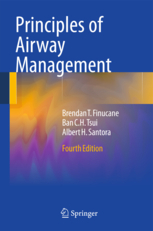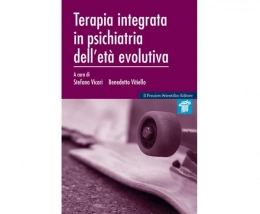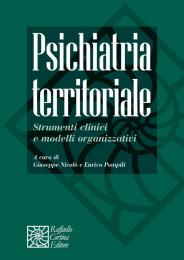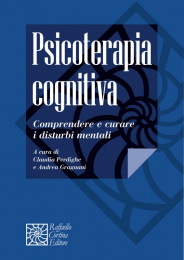Non ci sono recensioni
- The very latest on equipment, techniques, and discussions relating to the airway, including surgical approaches Step-by-step discussion of the most important elements of airway management Up-to-date information about the Laryngeal Mask Airway Major update on the pediatric airway Comprehensive chapter on complications of airway management More than 400 illustrations, tables, and boxes, many now in color
Principles of Airway Management is the leading text on the essentials of airway management. First published in 1988 and now in its Fourth Edition, it remains the text of choice for clinicians and trainees across a range of specialties – anesthesiology, emergency medicine, critical care medicine, surgery, and acute care medicine – who confront the issue of airway management.
Highlights:
· Step-by-step guidance on airway management
· More than 400 illustrations, tables, and boxes – many now in color!
· New chapter on innovations in airway equipment
· New chapter on extubation strategies
· Major update on the pediatric airway
· The latest on equipment, techniques, surgical approaches, and the Laryngeal Mask Airway
· Comprehensive coverage of complications
· Well referenced, with suggestions for additional reading
· Thorough coverage of applied anatomyFrom the reviews of the Third Edition:
“Airway texts tend to fall into one of two extremes: the oversimplified handbook... or the comprehensive text that can be overburdening to read. Principles of Airway Management is a superb bridge of these two worlds." --Anesthesia & Analgesia
“Covers well the basic principles of airway management...I would definitely recommend it for Anaesthetic or Emergency Department Libraries." -- Anaesthesia + Intensive Care
“A worthy reference for those in any specialty concerned with airway management. It is readable for the student as well as the senior practitioner... [it] should remain a valuable selection on a critical care or anesthesia reference shelf for years to come.” --Doody’s
xi
1 Anatomy of the Airway............................................................................. 1
Introduction.................................................................................................. 2
The Nose...................................................................................................... 2
Oral Cavity................................................................................................... 4
Uvula....................................................................................................... 4
Tonsils...................................................................................................... 5
Tongue..................................................................................................... 6
Pharynx........................................................................................................ 7
Prevertebral Fascia................................................................................... 9
Retropharyngeal Space............................................................................ 9
Larynx.......................................................................................................... 10
Laryngeal Cartilages................................................................................ 11
Laryngeal Cavity..................................................................................... 15
Nerve Supply to the Larynx..................................................................... 16
Action of the Cricothyroid Muscle and the Intrinsic Muscles
of the Larynx........................................................................................... 17
Trachea and Bronchi.................................................................................... 18
Main Divisions of the Bronchial Tree..................................................... 20
Comparative Anatomy of the Adult and Infant Airways............................. 21
Head......................................................................................................... 22
Nose......................................................................................................... 22
Tongue..................................................................................................... 22
Larynx...................................................................................................... 22
Cricoid Cartilage..................................................................................... 23
Epiglottis.................................................................................................. 23
Trachea and Mainstem Bronchi............................................................... 23
Summary...................................................................................................... 25
References.................................................................................................... 25
Suggested Reading....................................................................................... 25
Contents
xii Contents
2 Evaluation of the Airway........................................................................... 27
Introduction.................................................................................................. 28
The Normal/Abnormal Airway.................................................................... 29
Predictive Tests for Difficult Intubation....................................................... 29
Elective Intubation....................................................................................... 32
History Pertinent to Elective Airway Management................................. 32
Diabetes Mellitus..................................................................................... 32
NPO Status.............................................................................................. 33
Physical Examination.............................................................................. 34
Structured Approach.................................................................................... 49
Bag/Valve/Mask Ventilation........................................................................ 50
Additional Information................................................................................ 52
Arterial Blood Gases............................................................................... 52
ENT Consultation.................................................................................... 53
Radiologic Studies................................................................................... 53
Pulmonary Function Studies.................................................................... 53
Flow-Volume Loops................................................................................ 54
Difficult Airway Clinic............................................................................ 54
The “Awake Look”.................................................................................. 55
Summary...................................................................................................... 56
References.................................................................................................... 56
Suggested Reading....................................................................................... 58
3 Basic Emergency Airway Management
and Cardiopulmonary Resuscitation (CPR)........................................... 59
Emergency Airway Management................................................................. 60
Importance of Basic Life Support................................................................ 60
Adult Basic Life Support (BLS).................................................................. 61
Chain of Survival..................................................................................... 62
Changes in the 2005 and 2010 AHA Recommendations........................ 62
The AHA Algorithm and Recommendations for Rescue Breaths,
a Universal Compression-Ventilation Ratio, and Defibrillation.............. 63
Techniques of CPR.................................................................................. 68
Limitations and Complications of CPR................................................... 80
Airway Obstruction...................................................................................... 80
Etiology of Upper Airway Obstruction................................................... 80
The Tongue as a Cause of Airway Obstruction....................................... 81
Foreign Body Airway Obstruction.......................................................... 82
CPR and Precautions Against the Transmission of Disease........................ 87
Transmission of Disease from CPR Mannequins.................................... 88
Summary...................................................................................................... 89
References.................................................................................................... 89
Contents xiii
4 Basic Equipment for Airway Management............................................. 93
Introduction.................................................................................................. 93
Oxygen Sources........................................................................................... 94
Wall Oxygen............................................................................................ 94
Tank Oxygen............................................................................................ 95
Pulse Oximetry and Capnography........................................................... 98
Vacuum Suction Apparatus.......................................................................... 98
Oxygen Delivery Systems for Spontaneously Breathing Patients............... 100
Oxygenation and Ventilation Systems......................................................... 104
Airways.................................................................................................... 105
Anesthesia Masks and Resuscitation Bags.............................................. 110
Equipment for Endotracheal Intubation.................................................. 115
Other Useful Airway Tools...................................................................... 121
Cleaning, Disinfecting, and Sterilizing Equipment..................................... 121
Equipment Problems............................................................................... 123
“The Dedicated Airway” and the “Ideal Airway Device”........................... 124
Summary...................................................................................................... 124
References.................................................................................................... 124
5 The Laryngeal Mask Airway (LMA™) and Other
Extraglottic (Supraglottic) Airway Devices............................................. 129
Introduction.................................................................................................. 130
The “Ideal” Extraglottic Airway.................................................................. 131
Classification of Extraglottic (Supraglottic) Airway Devices..................... 132
Description of Extraglottic Airways........................................................ 133
Basic Extraglottic Airway Design and Function..................................... 133
Cleaning and Sterilization of Reusable LMA™ Products....................... 135
Basic LMA™ Design Features................................................................ 135
LMA™ Models....................................................................................... 137
Ambu® Line of Extraglottic Airway Products......................................... 137
General Information Concerning Ambu® LMAs..................................... 137
Sizing of Extraglottic Airways................................................................ 139
Descriptions of Extraglottic Airway Design and Features...................... 139
Illustrations of Extraglottic Airway Devices........................................... 139
Insertion Techniques.................................................................................... 153
Preinsertion Recommendations............................................................... 153
LMA™ Insertion Recommendations...................................................... 153
LMA™ Insertion..................................................................................... 154
Index Finger Insertion Technique............................................................ 155
Thumb Insertion Technique..................................................................... 157
LMA ProSeal™ Insertion Using the Introducer...................................... 159
Testing the LMA ProSeal™ for Proper Positioning:
“Malpositioning Test”............................................................................. 163
LMA Fastrach™ Insertion and Intubation Through the Airway............. 170
Insertion of Ambu® Mask Airways......................................................... 178
xiv Contents
Insertion of the SLIPA™ SGA................................................................ 182
Insertion of SLIPA™ Airway.................................................................. 184
Insertion of the King LT(S)-D® Airway.................................................. 186
Modified Insertion Techniques................................................................ 187
Use of the GEB (Gum Elastic Bougie) for LMA
ProSeal ™ Insertion................................................................................. 188
Laryngoscope-Guided, GEB-Guided LMA ProSeal™
Insertion Technique................................................................................. 190
Removing the Extraglottic Airway.............................................................. 193
Further Comments on LMA™ Size............................................................. 194
Ease of LMA™ Insertion and Airway Grading Systems............................ 194
Comparison of Methods to Assess LMA™ Airway Sealing Pressures....... 195
LMA™ and Modalities of Ventilation......................................................... 196
Use of the LMA™ with Pediatric Patients.................................................. 197
Insertion Techniques for Pediatric Patients............................................. 197
Removal of the LMA™ in Pediatric Patients.......................................... 198
Use of the LMA™ to Manage Patients with Congenital
Airway Anomalies................................................................................... 198
LMA™ and Neonatal Resuscitation........................................................ 199
Diagnostic Fiberoptic Bronchoscopy with LMA™ Assistance.............. 199
Use of the LMA™ in Pediatric Surgical Patients with
Upper Respiratory Tract Infections (URI’s) and Mild
Bronchopulmonary Dysplasia (BPD)...................................................... 199
The Learning Curve for Use of the LMA™ on Pediatric Patients.......... 201
Long-Term Use of the LMA™ on Pediatric Patients.............................. 201
The Use of the LMA ProSeal™ on Pediatric Patients............................ 201
Innovative Uses of the LMA™.................................................................... 202
Patient Position........................................................................................ 203
Adjunctive Equipment to Aid Endotracheal Intubation Through
the Extraglottic Airway................................................................................ 205
Extraglottic Airways and the “Difficult Airway”........................................ 205
Use of the LMA™ to Manage the Difficult Airway
in Obstetric Patients................................................................................. 208
Use of the LMA™ and the Difficult Pediatric Airway........................... 209
The LMA™ and the Morbidly Obese Patient......................................... 210
Use of the LMA™ in Patients with Cervical Spine Pathology............... 210
Cervical Pressure and Movement Associated with LMA™ Use............ 211
Role of the LMA Outside of the Operating Room (PreHospital
and Emergency Room)................................................................................. 212
Problems Associated with the Use of Extraglottic Airway Devices............ 213
What to Do if the Patient Regurgitates with an Extraglottic
Airway in Place............................................................................................ 215
U.S. FDA Regulations Concerning the Introduction of
Extraglottic Airway Devices to the Market: “510 (k) Exempt”
Classification................................................................................................ 216
Contents xv
Is the Extraglottic Airway Device Interchangeable with the
Endotracheal Tube in the Practice of Anesthesia?....................................... 217
Summary...................................................................................................... 223
References.................................................................................................... 223
6 Advanced Airway Devices......................................................................... 233
Introduction.................................................................................................. 234
Supra and Infraglottic Devices..................................................................... 235
Supraglottic Devices................................................................................ 235
Infraglottic Devices................................................................................. 245
Laryngoscope Handles and Blades.............................................................. 247
Handles.................................................................................................... 247
Blades...................................................................................................... 249
Fiberoptic Laryngoscopes............................................................................ 254
Truview EVO2......................................................................................... 254
Heine FlexTip+........................................................................................ 255
Flipper...................................................................................................... 255
Bullard..................................................................................................... 257
WuScope.................................................................................................. 257
Video laryngoscopes................................................................................... 258
Storz DCI Video Intubating System........................................................ 259
GlideScope.............................................................................................. 260
McGrath................................................................................................... 263
Airway Scope (AWS-S100)..................................................................... 265
Airtraq...................................................................................................... 266
TrachView Intubating Videoscope........................................................... 268
Comparisons of Indirect Laryngoscopes................................................. 269
Stylets and Light Wands.............................................................................. 269
Conventional Stylets: Endotracheal Tube Introducers
and Exchangers........................................................................................ 269
Optical Stylets......................................................................................... 272
Illuminating Stylets (Lightwands)........................................................... 278
Endotracheal Tubes...................................................................................... 281
Articulating.............................................................................................. 281
Armored or Wire-Reinforced.................................................................. 282
Double-Lumen Endobronchial................................................................ 282
Polar RAE (Ring-Adair-Elwyn).............................................................. 283
Uncuffed.................................................................................................. 284
Parker Flex-Tip........................................................................................ 284
GlideRite.................................................................................................. 285
Brief Review of Other Tubes................................................................... 285
Cricothyrotomy............................................................................................ 286
Catheter-Over-Needle Technique............................................................ 286
Wire-Guided Technique........................................................................... 287
Ultrasound Imaging of the Airway.............................................................. 289
xvi Contents
Oral Cavity and Pharynx......................................................................... 290
Larynx...................................................................................................... 291
Cervical Trachea...................................................................................... 291
Lung......................................................................................................... 292
Available Portable Ultrasound Systems................................................... 292
Airway Management Training Devices....................................................... 293
Task/Skills Trainers................................................................................. 293
Manikins and Simulated Settings............................................................ 294
Animal Models........................................................................................ 296
Cadaver Models....................................................................................... 296
Virtual Reality Simulators....................................................................... 296
References.................................................................................................... 297
7 Indications and Preparation of the Patient for Intubation.................... 309
Introduction.................................................................................................. 310
General Indications for Intubation............................................................... 310
Ventilatory Support.................................................................................. 310
Selecting the Route of Intubation................................................................ 317
Orotracheal Intubation............................................................................. 317
Nasotracheal Intubation........................................................................... 318
Transtracheal Intubation.......................................................................... 319
Endobronchial Intubation........................................................................ 319
Preparation of the Patient for Intubation
Outside the Operating Room....................................................................... 319
Patient Interview...................................................................................... 320
Sedation................................................................................................... 320
Local Anesthetic Techniques................................................................... 322
General Anesthesia.................................................................................. 322
Neuromuscular Blocking Drugs.................................................................. 323
Depolarizing Drug: Succinylcholine....................................................... 324
Nondepolarizing Drugs........................................................................... 326
Methods of Administering a Neuromuscular Blocking Drug................. 327
Reversal of Neuromuscular Blockade..................................................... 327
Summary...................................................................................................... 328
References.................................................................................................... 329
Suggested Reading....................................................................................... 330
8 Techniques of Intubation........................................................................... 331
Introduction.................................................................................................. 332
Intubation Methods...................................................................................... 333
Orotracheal Intubation by Direct Vision
in an Adult (Macintosh Blade)................................................................ 333
Orotracheal Intubation by Direct Vision in
an Adult (Miller Blade)........................................................................... 349
Contents xvii
Nasotracheal Intubation by Direct Vision in
an Adult (Macintosh Blade)................................................................... 349
Airway Maneuvers..................................................................................... 356
BURP..................................................................................................... 357
OELM.................................................................................................... 357
Sellick’s Maneuver (Cricoid Pressure).................................................. 357
Failed Intubation (Normal Anatomy)........................................................ 358
Summary.................................................................................................... 358
References.................................................................................................. 359
Suggested Reading..................................................................................... 360
9 The Difficult Airway................................................................................ 361
Introduction................................................................................................ 362
Definitions.................................................................................................. 362
Mask Ventilation........................................................................................ 364
Incidence of the Difficult Airway.............................................................. 365
Etiology of Difficult Intubation................................................................. 370
Limited Access to the Oropharynx or Nasopharynx.............................. 370
Inability to See the Larynx..................................................................... 370
Diminished Cross-Sectional Area of the Larynx or Trachea................. 370
Practice Guidelines and the ASA Difficult Airway Algorithm................. 371
Difficult Airway Kit................................................................................... 374
Basic Essentials of an Airway Kit......................................................... 374
Structured Approach to the Difficult Airway in the Operative Room....... 374
Failed Awake Intubation for Elective Surgery....................................... 375
Unanticipated Difficult Airway in Elective Surgery.............................. 376
Unanticipated Difficult Intubation in Emergency Surgery.................... 378
Anticipated Difficulty in Elective or Emergency Surgery..................... 379
Loss of the Airway: “Cannot Intubate, Cannot Ventilate”......................... 379
Difficult Airway in Special Circumstances................................................ 381
Emergency Room................................................................................... 381
Intensive Care Unit (ICU)...................................................................... 393
Operating Room..................................................................................... 395
Summary.................................................................................................... 406
References.................................................................................................. 407
10 Pediatric Airway Management............................................................... 417
Section A: Basic and Difficult Airway Management................................ 417
Introduction................................................................................................ 417
The Pediatric Airway: Anatomy and Function.......................................... 417
Susceptibility to Obstruction................................................................. 417
Susceptibility to Respiratory Failure..................................................... 420
Difficulty During Tracheal Intubation................................................... 421
Basic Airway Management and CPR in Infants and Children.................. 421
Opening the Airway............................................................................... 422
xviii Contents
Basic Life Support................................................................................. 423
Resuscitation of the Neonate..................................................................... 426
2005 and 2010 American Heart Association Neonatal
Resuscitation Guidelines........................................................................ 428
The Neonatal Resuscitation Program..................................................... 431
Airway Equipment..................................................................................... 433
Face Masks............................................................................................. 433
Airways.................................................................................................. 433
Laryngeal Mask Airway (LMA) and Other Supraglottic Devices......... 434
T-Piece................................................................................................... 435
Intubation Equipment............................................................................. 436
Techniques For Bag-Valve-Mask Ventilation............................................ 439
Techniques of Routine Endotracheal Intubation in
Infants and Children................................................................................... 439
Premedication and Induction of Anesthesia.......................................... 440
Position.................................................................................................. 440
Confirmation.......................................................................................... 441
Stabilization and Monitoring................................................................. 442
Summary................................................................................................ 442
Laryngospasm............................................................................................ 442
Intubation Trauma...................................................................................... 444
Difficult Pediatric Airway.......................................................................... 445
Definition and Classifications................................................................ 445
Anesthetic Management and Induction Technique................................ 448
Clinical Strategies for Difficult Ventilation and Intubation................... 449
Fiberoptic Intubation Techniques.......................................................... 451
Extubation Considerations for the Difficult Airway.............................. 452
Airway Obstruction in the Child................................................................ 453
Clinical Presentation.............................................................................. 453
Etiology.................................................................................................. 454
Managing Foreign Body Airway Obstruction (FBAO)......................... 464
Treating Epiglottitis and Croup.............................................................. 469
Management of the Child with Impending
Complete Airway Obstruction............................................................... 472
Heliox in Pediatric Airway Management.................................................. 474
Tracheostomy in the Child......................................................................... 474
Preparation............................................................................................. 475
Technique............................................................................................... 475
Complications........................................................................................ 475
Summary.................................................................................................... 476
Section B: Advanced Airway Management for Endoscopic
(ENT) Procedures...................................................................................... 477
Introduction................................................................................................ 477
Description of Basic Endoscopic Procedures............................................ 477
Flexible Endoscopy................................................................................ 477
Contents xix
Rigid Bronchoscopy............................................................................... 478
Microlaryngoscopy................................................................................ 479
Anesthetic Considerations for Endoscopic Procedures............................. 479
Goals of the Anesthesiologist during Pediatric ENT Procedures.......... 480
General Anesthetic Approaches............................................................. 481
Anesthetic Options During the Airway Procedure................................ 483
Clinical Scenarios...................................................................................... 487
Upper Airway Pathology....................................................................... 488
Lower Airway Pathology....................................................................... 500
References.................................................................................................. 506
11 Fiberoptically Guided Airway Management Techniques..................... 515
Introduction................................................................................................ 516
Applications............................................................................................... 516
Implementation: Learning the Technique.................................................. 517
Indications.................................................................................................. 518
Equipment.................................................................................................. 519
Intubating Airways................................................................................. 519
Masks/Adapters...................................................................................... 521
Endotracheal Tubes................................................................................ 522
Light Source........................................................................................... 523
Fiberoptic Endoscope............................................................................. 525
Fiberoptic Cart....................................................................................... 527
Techniques of Fiberoptic Intubation.......................................................... 529
Awake Fiberoptic Intubation.................................................................. 530
Fiberoptic Intubation for an Anesthetized Patient................................. 548
Difficulty Passing the Endotracheal Tube Off the Fiberoptic Scope:
Causes and Solutions................................................................................. 550
Right Arytenoid Cartilage Impediment to Endotracheal
Tube Passage over Endoscope............................................................... 550
Rotation of the Endotracheal Tube........................................................ 551
Alternate Endotracheal Tube Tip Designs............................................. 551
Tube Size and Fiberoptic Scope Diameter............................................. 552
Conclusions............................................................................................ 553
Complications of Fiberoptic Intubation..................................................... 553
Special Uses of the Fiberoptic Endoscope................................................. 554
Endobronchial Tube Placement............................................................. 555
Retrograde Wire-Guided Intubation...................................................... 555
Endotracheal Tube Change.................................................................... 556
Case Report................................................................................................ 556
Techniques to use in the ICU..................................................................... 557
Pediatric Use.............................................................................................. 558
Fiberoptic Endoscopy and Adjunctive Airway Devices............................ 558
COPA (Cuffed Oropharyngeal Airway)................................................. 558
LMA (Laryngeal Mask Airway)............................................................ 559
xx Contents
Other Devices......................................................................................... 559
Fiberoptic Endoscope and Jet Ventilation.................................................. 561
Fiberoptic Endoscopy in the Difficult/Emergent Airway Scenario........... 561
Optical Intubating Stylets.......................................................................... 562
Summary.................................................................................................... 563
References.................................................................................................. 563
12 Surgical Options in Airway Management............................................. 569
Introduction................................................................................................ 570
Oxygenation vs. Ventilation....................................................................... 570
Airway Algorithms.................................................................................... 571
Preparing to Manage the Surgical Airway................................................. 571
Surgical Options in Airway Management.................................................. 572
Techniques................................................................................................. 572
Needle/Catheter Cricothyroidotomy...................................................... 573
Retrograde Catheter-Assisted Intubation............................................... 584
Minitracheostomy.................................................................................. 588
Percutaneous Dilational Tracheostomy (PDT)...................................... 594
Adjunctive Equipment and Techniques Used to Facilitate
PDT Placement and other Surgical Airway Management Options........ 613
Learning Percutaneous Tracheostomy................................................... 621
Clinical Patterns of PDT Utilization...................................................... 621
Teaching Surgical Airway Techniques................................................... 622
Contraindications to Performing Percutaneous Tracheostomy.............. 622
Emergency Percutaneous Tracheostomy............................................... 623
Emergency Surgical Cricothyrotomy..................................................... 623
Emergency Cricothyroidotomy Techniques........................................... 627
Formal Tracheostomy............................................................................ 631
Rigid Bronchoscopy............................................................................... 632
Summary.................................................................................................... 632
References.................................................................................................. 633
13 Mechanical Ventilation and Respiratory Care...................................... 641
Introduction................................................................................................ 642
Description of a Mechanical Ventilator..................................................... 643
Commonly Utilized Modes of Ventilation................................................. 643
Siemens Servo Ventilator....................................................................... 644
Initial Ventilator Settings....................................................................... 646
Pediatric and Neonatal Ventilation......................................................... 647
Weaning the Patient from Mechanical Ventilation................................ 649
Troubleshooting Ventilator Problems........................................................ 650
Current Strategies and Practices in Mechanical Ventilation
and Respiratory Care.................................................................................. 651
ALI/ARDS (Acute Lung Injury/Acute Respiratory
Distress Syndrome)................................................................................ 653
Contents xxi
Current Ventilation Strategies................................................................ 655
Recruitment Maneuvers......................................................................... 656
Alternative Modalities of Ventilation..................................................... 658
New Weaning Strategies........................................................................ 658
Complications of Mechanical Ventilation.................................................. 659
Ventilator Associated Pneumonia.......................................................... 660
Closed-Circuit Suctioning...................................................................... 661
Portable Ventilators................................................................................ 661
Hyperbaric Oxygenation........................................................................ 662
Ethical Considerations of Mechanical Ventilation................................. 662
Future ALI/ARDS Research...................................................................... 662
Summary.................................................................................................... 662
References.................................................................................................. 663
14 Extubation Strategies: The Extubation Algorithm............................... 667
Introduction................................................................................................ 667
Purpose of an Algorithm............................................................................ 668
Purpose of an Extubation Algorithm..................................................... 668
Extubation Criteria................................................................................. 668
Extubation Criteria Following a Difficult Intubation............................. 669
Strategies to Extubate a Patient with a Difficult Airway........................... 670
American Society of Anesthesiologists Task Force
on the Management of the Difficult Airway: Strategy
for Extubation of the Difficult Airway................................................... 670
Difficult Airway Extubation Algorithms............................................... 671
Hagberg et al. Extubation Algorithm..................................................... 671
Extubation Algorithm for Patients with Difficult
Airways.................................................................................................. 673
Preoxygenation...................................................................................... 673
Airway Anesthesia Prior to Extubation................................................. 673
Patient Education Prior to Extubation.................................................... 674
Option A: Extubation over an Airway Guide........................................ 675
Option B: Extubation with Fiberoptic Guidance................................... 675
Option C: Extubation with Video Laryngoscopic Guidance................. 677
Combined Extubation Options............................................................... 679
Summary.................................................................................................... 680
References.................................................................................................. 681
15 Complications of Airway Management................................................. 683
Introduction................................................................................................ 685
Complications Arising During Intubation................................................. 685
Trauma................................................................................................... 685
Hypoxemia............................................................................................. 689
Complications Arising Immediately After Intubation............................... 695
Hypoxemia............................................................................................. 695
xxii Contents
Complications Arising upon Removal of Endotracheal Tube................... 701
Hypoxemia............................................................................................. 701
Sore Throat............................................................................................. 705
Temporomandibular Joint Dysfunction................................................. 706
Vocal Cord Injury................................................................................... 706
Neural Injury.......................................................................................... 708
Complications Arising from Long-Term Intubation.................................. 709
Ulceration of the Mouth, Pharynx, Larynx, and Trachea...................... 710
Granuloma Formation............................................................................ 710
Formation of Synechiae and Webs......................................................... 710
Tracheal Stenosis................................................................................... 710
Complications Occurring Specifically in Relation to
Nasotracheal Intubation............................................................................. 711
Epistaxis................................................................................................. 711
Submucosal Dissection.......................................................................... 711
Middle Turbinectomy............................................................................ 711
Trauma to the Posterior Pharyngeal Wall.............................................. 712
Trauma to the Adenoids......................................................................... 712
Pressure Necrosis in the Nose................................................................ 712
Obstruction of the Eustachian Tube....................................................... 712
Maxillary Sinusitis................................................................................. 712
Complications of Laser Surgery................................................................ 712
Summary.................................................................................................... 713
Airway Management Complications Summarized
from Anesthesiology Morbidity Studies.................................................... 713
American Society of Anesthesiologists Closed Claims Study.............. 714
Australian Incident Monitoring Study (AIMS)...................................... 718
Deaths Attributed to Anesthesia in New South Wales:
1984–1990............................................................................................. 722
The Pediatric Perioperative Cardiac Arrest Registry (POCA)............... 723
NCEPOD (National Confidential Enquiry into
Perioperative Deaths)............................................................................. 723
SAMS (Scottish Audit of Surgical Mortality)....................................... 725
Danish Morbidity Study: 1994–1998.................................................... 725
Summary.................................................................................................... 727
References.................................................................................................. 727
Suggested Reading..................................................................................... 730
Index.................................................................................................................. 731




